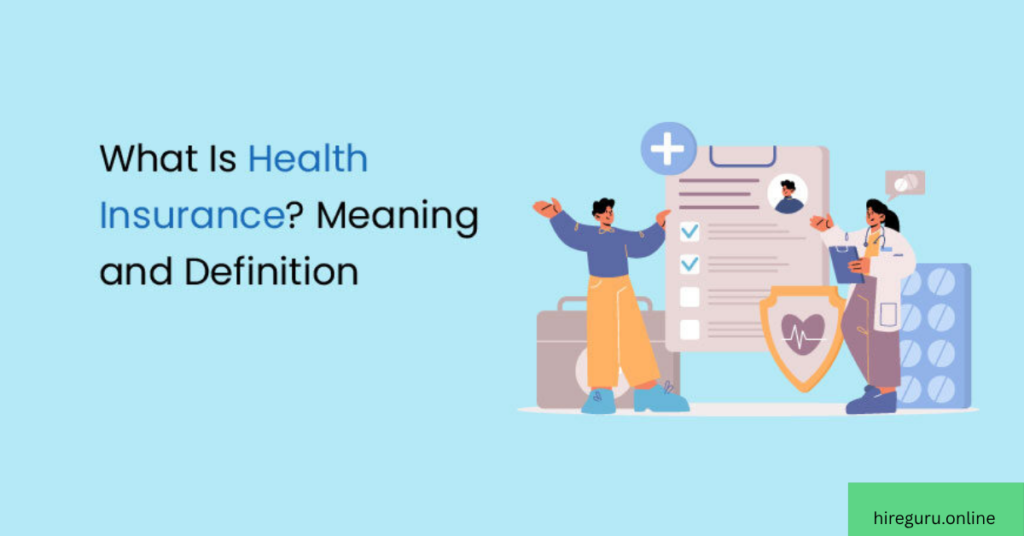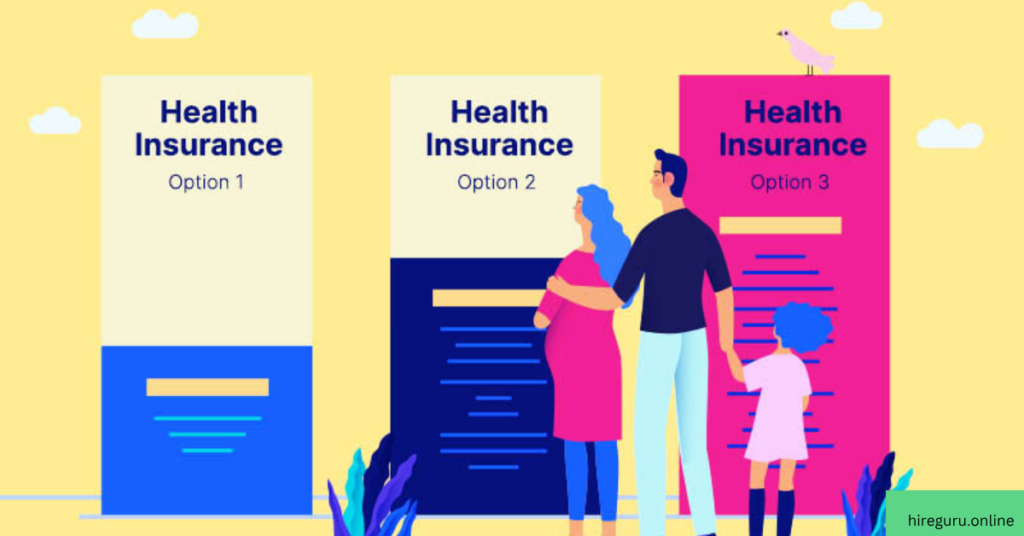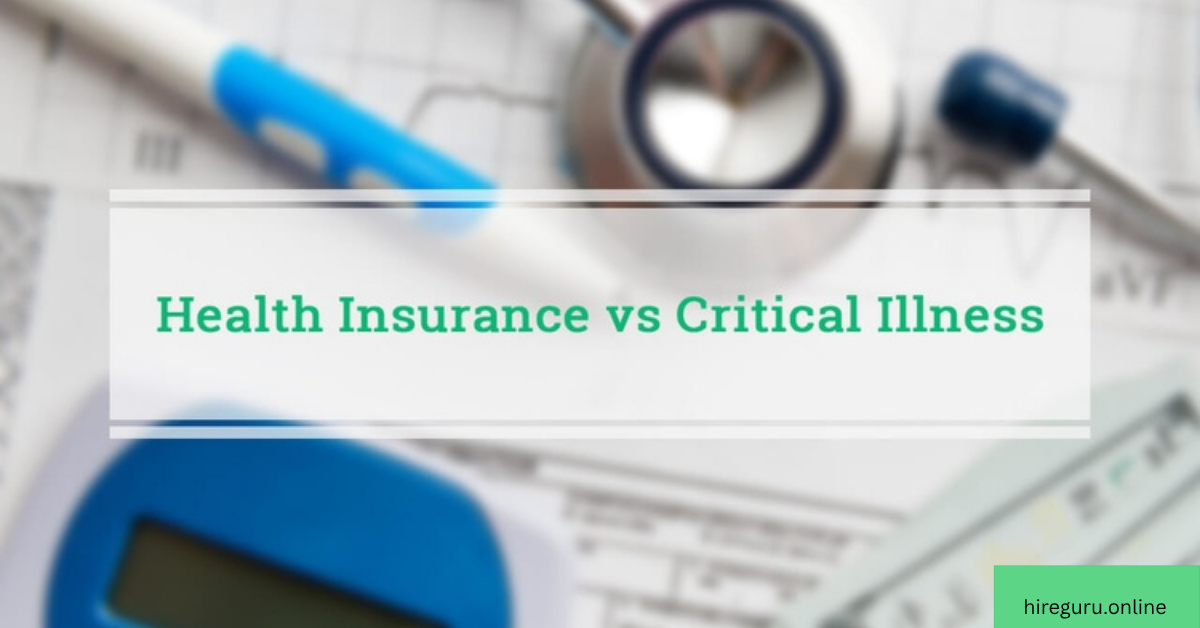Health Insurance vs. Critical Illness Cover: What’s the Difference?
In this detailed guide, you’ll learn health insurance vs. critical illness cover differences between standard health insurance and critical illness cover, when to buy them, and why a combination of both may be the smartest option for complete health protection.
With rising medical inflation, having a financial backup plan has become essential. Whether you’re planning for unexpected emergencies or safeguarding against life-threatening illnesses, the right insurance coverage can protect your savings and offer peace of mind.
But many people are confused when comparing health insurance vs. critical illness cover. While both offer important financial protection, they work in very different ways.
What Is Health Insurance?

Health insurance is a policy designed to cover your medical expenses in case of illness, injury, or hospitalization. The insurance company either reimburses the cost or directly settles the bill with the hospital through a cashless facility.
✅ Key Features of Health Insurance:
- Covers hospitalization expenses including surgery, room rent, ICU charges, medicines, and diagnostics
- Often includes pre and post-hospitalization coverage
- Can be individual or family floater
- Renewable annually or for longer terms (2-3 years)
- Comes with a defined sum insured limit
- Some policies also offer day care procedures and maternity benefits
Health insurance for families with cashless hospital coverage is one of the most common products purchased today.
What Is Critical Illness Insurance?
Critical illness cover is a standalone or rider-based insurance policy that offers a lump sum payout if the insured person is diagnosed with a specified serious illness such as:
- Cancer
- Heart attack
- Kidney failure
- Stroke
- Organ transplant
- Paralysis
Unlike traditional health insurance, critical illness cover is not linked to hospitalization bills. Once the diagnosis is confirmed, the insurer pays a fixed lump sum amount, regardless of actual treatment cost.
✅ Key Features of Critical Illness Insurance:
- Lump sum benefit paid on diagnosis
- Use the amount for any purpose: treatment, EMIs, family expenses, or recovery
- Covers a predefined list of critical illnesses
- Policy ends after one claim in most cases
- Lower premium compared to health insurance of same sum insured
Critical illness plans for working professionals are gaining popularity due to rising lifestyle-related health risks.
Key Differences: Health Insurance vs. Critical Illness Cover
Let’s break down the major distinctions between the two types of coverage:
| Feature | Health Insurance | Critical Illness Cover |
|---|---|---|
| Coverage Type | Hospitalization costs | Lump sum payout on diagnosis |
| Claim Type | Reimbursement or cashless | One-time lump sum |
| Frequency of Claims | Multiple claims allowed | Usually one-time claim |
| Disease Coverage | General illnesses, injuries, surgeries | Only specific critical illnesses |
| Benefit Usage | Medical expenses only | Any purpose (income, treatment, debts) |
| Premium Cost | Higher for broader coverage | Lower for the same sum insured |
This table clearly illustrates how health insurance and critical illness insurance serve different but complementary roles in your financial protection strategy.
When Should You Choose Health Insurance?

Health insurance is a must-have for everyone—regardless of age or income level. It is especially critical if:
- You want to protect your savings from unexpected medical bills
- You have dependents and want family coverage
- You frequently visit doctors or hospitals
- You’re planning for maternity, surgeries, or long-term care
Comprehensive health insurance with cashless hospital networks is ideal for managing routine and emergency medical needs.
When Should You Choose Critical Illness Cover?
Critical illness cover is most useful when you want protection from high-cost, long-term health events that can interrupt your income. Consider it if:
- You are the sole breadwinner of your family
- Your family has a history of cancer, stroke, or heart disease
- You have long-term loans or financial obligations
- You want an additional layer of income replacement
A critical illness insurance plan for heart disease and cancer can provide crucial support during recovery, when regular health insurance may not be enough.
Why You Might Need Both Types of Insurance
You don’t have to choose one over the other. In fact, combining both types of insurance offers complete financial coverage.
💡 Example:
If someone is diagnosed with cancer:
- Health Insurance covers the hospital bills, tests, and medications
- Critical Illness Cover provides a lump sum to manage non-medical expenses like home care, therapy, nutrition, and loss of income
Together, they ensure that the patient and their family can focus on recovery instead of worrying about finances.
Common Myths About Critical Illness and Health Insurance
Many misconceptions keep people from getting the right coverage. Let’s bust a few:
❌ Myth 1: “I already have health insurance, I don’t need more.”
Truth: Health insurance won’t cover income loss, rehabilitation, or lifestyle changes during recovery. Critical illness does.
❌ Myth 2: “Critical illness cover is only for older people.”
Truth: Diseases like heart attack and cancer are increasingly affecting people in their 30s and 40s.
❌ Myth 3: “All diseases are covered under critical illness policies.”
Truth: Only the illnesses listed in your policy document are covered. Always read the list carefully.
Also Visit This Right Term Life Insurance Plan
How to Choose the Right Plans

When selecting insurance, always keep your personal and family needs in mind. Here’s how to decide:
✅ 1. Assess Your Health Risk
- Look at your family’s medical history
- Consider your lifestyle, stress levels, diet, and smoking habits
✅ 2. Decide on Sum Assured
- For health insurance: choose a sum that covers major surgeries and a few days of ICU stay
- For critical illness: consider income replacement for at least 1–3 years
✅ 3. Choose a Reliable Insurer
- Check claim settlement ratio
- Look for top-rated critical illness plans with fast claim approval
- Read reviews about customer support and cashless networks
✅ 4. Read the Policy Terms Carefully
- Understand exclusions, waiting periods, and claim process
- Don’t rely on just brochures—always review the full document
Conclusion
Both health insurance and critical illness cover are essential, but they serve very different purposes. Health insurance handles your hospital bills and treatments, while critical illness cover helps you deal with the bigger picture—long-term recovery, income loss, and financial pressure.
For the best protection, especially in today’s uncertain world, it’s wise to invest in both types of insurance. Together, they can help you and your loved ones face life’s health challenges with financial confidence.




